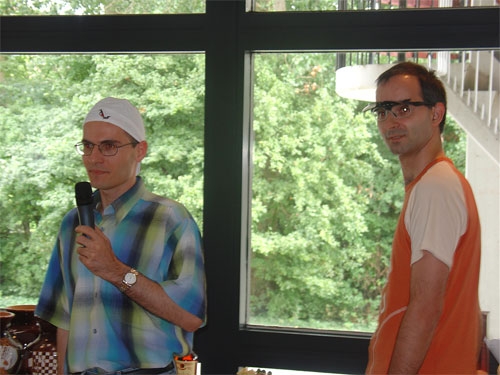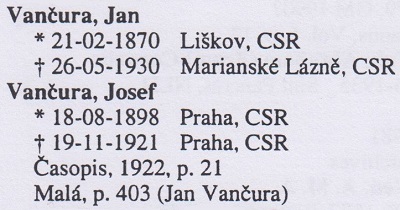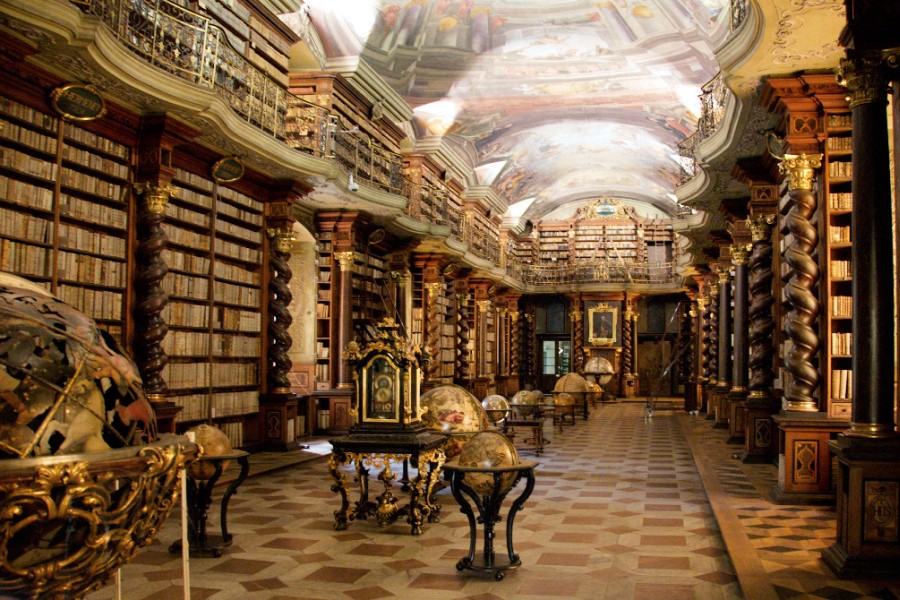Study of the Month: July 2020
Josef was 28 when his son was born in Smichov, a district of Prague by the Vitava river, on 18 August 1898. His wife Matilda had made him the great gift of giving birth to a young boy. The boy would learn about law and chess, and start making his own chess puzzles, just like Josef did. While he didn’t know all of this yet, the founder of papyrology in Czechia would name his son after himself: Josef Vančura.
When we talk about a man named Josef Vančura, usually we talk about the endgame studies composer. It is safe to assume that many readers will know his theoretical works, especially a rook endgame known as the “Vančura position”.
It seems that for the Vančura position (also sometimes called the Vančura draw), the position of the white king is not necessarily relevant, as both of those configurations are called the Vančura position (and indeed another one is given by Dvoretzky in the same book). Wikipedia quotes the first one. It is of note that White can’t bring his king closer, and I’ll go into more detail below, with the information from that source as well as John Beasley’s “British Endgame Study News” — the two relevant issues are Special Number 63 and the one from September 2010, as found linked at the Chess Composers Blogspot by Huber and Crişan [pictured]. The latter issue only clarifies why for a long time it was thought his first name is Jan.
 Black will draw because, if the white king tries to support his pawn, the rook can give checks on the f-file while the white king can’t find any refuge. If White plays a6-a7, Black brings the rook to a6. Here we see why the king should be on g7. If the king was on f7, White could easily win: 1.a7 Ra6 2.Rh8 Rxa7 3.Rh7+. Although this should be an ancient maneuver, the oldest example I found is from Kling & Horwitz 1851. In any case, both Dvoretzky and Beasley agree that the Vančura position revolutionized the theory of this specific endgame, as many analyses before 1924 became — or rather always were — incorrect due to the new knowledge.
Black will draw because, if the white king tries to support his pawn, the rook can give checks on the f-file while the white king can’t find any refuge. If White plays a6-a7, Black brings the rook to a6. Here we see why the king should be on g7. If the king was on f7, White could easily win: 1.a7 Ra6 2.Rh8 Rxa7 3.Rh7+. Although this should be an ancient maneuver, the oldest example I found is from Kling & Horwitz 1851. In any case, both Dvoretzky and Beasley agree that the Vančura position revolutionized the theory of this specific endgame, as many analyses before 1924 became — or rather always were — incorrect due to the new knowledge.
A short note on the publication where the famous draw position and many other endgame studies of the younger Josef Vančura appeared. For some time apparently it remained a mystery what the 28. říjen was, while it has always been known that it is a historical Czech/Czechoslovakian commemoration day (the Czechoslovakian Republic was founded on 28 October 1918). In the memory of these important events, a nationalist newspaper was founded under that name, running also a chess column. According to Ken Whyld, as referred to by Beasley, it was a Prague daily. As we taught the readers two years ago, F. J. Prokop ran its chess column for a while.
Our tale is a sad one, as even in 1924, when the position was first published, its author had left this world. This must have been an event that caused great pain to the elder Josef Vančura for the rest of his life (see the study in the final note).
It is of note that there is a sequence of moves that leads to the Vančura position, but that requires the rook to go to the other rook file first. Dvoretzky wrongly attributed it to Romanovsky 1950, but already Orrin Frink discovered it in 1925.
Black to move can draw with 1.-Ra5+ 2.Ke6 Rh5!!, and: 3.Kd6 Rh6+ 4.Kc7 Rf6! with the Vančura position, or 3.Ra7+ Kg8 4.Rf7 Ra5! 5.Ra7 Rh5!, and if White tries to win with 6.Kd6 Rh6+ 7.Kc7, Black must cautiously play either 7.-Rg6! or 7.-Rf6!, creating a Vančura draw, for example 7.-Rg6 8.Ra8+ Kh7!. If White plays 8.Kb8 instead, Black draws comfortably by any of four different moves, including the thematic 8.-Kh8 9.Ra8!? Kh7!.
The Frink position lends itself to some interesting introductory play, and I managed to create a “rundlauf”, i.e. the rook starting at f6 and returning to its original square.
While the theoretical value of this is debatable, the artistic value of the maneuver 1.-Rf2! 2.Kg5 R:a2 3.Kf5 Ra5+ 4.Ke6 Rh5! 5.Kd7 Rh6 6.Kc7 Rf6! exists despite only the first one and a half moves being completely original.
Josef Vančura (jr.), despite his short life, made at least two important contributions to endgame theory. The position above is one of them, the other is in the endgame of rook and a/h-pawn against the bishop that controls the promotion square. He also researched the other colored bishop, and while one of my favorite simple endgame study endings was shown by him, it was shown earlier by Duras and also Mouterde. However, the young Josef Vančura also analyzed the opposite case.
- Left: White draws with 1.Bb2! Ra5 2.Bd5, etc.
- Right: White wins with 1.Kg5!! Bc6 2.Rc4! Bb5 3.Rc7 Bd3 4.Kh6, but not 2.Ra7? Be4! 3.Kh6 Bb7!. The full analysis of this study, courtesy the database of Harold van der Heijden (unmodified), is replayable below.
Josef Vančura (jr.) (18 August 1898 - 19 November 1921)
During his short life, Josef Vančura worked as a scrivener and public notary according to the Dutch endgame study association ARVES. Unfortunately, I have no further biographic information available.
While finishing my article, I found that Edward Winter already had quoted the obituary that I asked Emil Vlasák about (see below) in his Chess Notes. Winter there links to an article in Pat a Mat where my suspicion was confirmed that the father of the deceased master handed over the sketchbook of around 70 endgame studies to another composer — said composer was not Prokop or Dedrle, as I had suspected, but Duras (sadly there is no mention of this in Prokop’s 1944 chess-biographical book “Duras vítězí”). Josef Martinák unfortunately did not give his source, neither did he give the source for the cause of the early death that he mentions. It seems that some of the studies are permanently lost, as the remains of the sketchbook are unknown, which usually means that after so many years only a miracle could turn it up again.
John Beasley writes in his British Endgame Study News, special number 63, June 2010:
Seven of his studies appear in the Russian edition of Averbakh (five in the English edition), eleven are in Cheron, and five are in John Nunn's Secrets of rook endings.
As I was unable to obtain the 28. říjen, I asked Emil Vlasák to translate for me the relevant information from the obituary given by František Dedrle in Časopis československých šachistů, issue 02/1922, where also an original by Josef Vančura appeared. Sadly it seems to have no new information.

Josef Vančura (sr.) (21 February 1870 - 26 May 1930)
The father worked as a professor of Roman Law at the University of Prague (also known as the Charles University). He is considered the founder of papyrology in Czechia. In 1925, he joined the Czech Academy of Science and Art. This information from the German Wikipedia is supplied by the Czech version, where we also learn that he became an extraordinary member of the Royal Czech Society of Sciences. Vančura was the dean of Charles University in 1910/1911, 1911/1912, 1924/1925. In 1926/1927 he was rector of the University. Other important dates in his life were 1893, when he graduated from Law at the Czech University. Afterwards he practiced Law for a short while before joining the Czech Provincial Committee where he became secretary in 1898, the same year he habilitated for Roman Law at the Czech Faculty of Law. As we saw earlier, his son was born the same year.
 He was the opening speaker of the first Ukrainian Scholarly Congress in Prague as rector of the Charles University, where it was held from 3 to 7 October 1926. The congress was organized by the émigré academic community. (Source: Nadia Zavorotna: Scholars in Exile: The Ukrainian Intellectual World in Interwar Czechoslovakia. University of Toronto Press 2020. Page 48-49).
He was the opening speaker of the first Ukrainian Scholarly Congress in Prague as rector of the Charles University, where it was held from 3 to 7 October 1926. The congress was organized by the émigré academic community. (Source: Nadia Zavorotna: Scholars in Exile: The Ukrainian Intellectual World in Interwar Czechoslovakia. University of Toronto Press 2020. Page 48-49).
Josef Vančura (sr.) composed chess problems, although not endgame studies. In the replayable section, the endgame studies are of his son, he composed the one problem. Sadly I was unable to find more of his problems in easily-available public sources.
Mistakenly, some sources give the first name of either the father or son as “Jan”.
Final note
One of the great motivations for most articles in this column is to remind of the great study composers of the past, as per George Eliot’s quote, “Our dead are never dead to us, until we have forgotten them”. and while this necessarily involves swiftly talking about death, rarely do we explore the relationships of parents and their children, as we do here, where by no doubt a long-lasting effect on the happiness of the surviving parents is left.
For interested readers I found a psychological study by Moor and de Graaf. They found: “Ten years after the death of a parent or child, bereaved people are still unhappier than people who have not experienced the death their relative” (Moor, N., de Graaf, P.M. Temporary and Long-Term Consequences of Bereavement on Happiness. J Happiness Stud 17, 913–936, 2016).
Please do not hesitate to get medical and psychological assistance if needed.
Click or tap an entry in the list to switch positions
You probably know that you can move pieces on our replay boards to analyse and even start an engine to help you. You can maximize the replayer, auto-play, flip the board and even change the piece style in the bar below the board.
At the bottom of the notation window on the right there are buttons for editing (delete, promote, cut lines, unannotate, undo, redo) save, play out the position against Fritz and even embed the ChessBase game viewer on your website or blog. Hovering the mouse over any button will show you its function.
Perfect endgame analysis and a huge increase in engine performance: Get it with the new Endgame Turbo 5! This brings the full 6-piece Syzygy endgame tablebases on a pendrive. Just plug it in a USB socket and you are set!

World Federation for Chess Composition (www.wfcc.ch)
Links



















 He was the opening speaker of the first Ukrainian Scholarly Congress in Prague as rector of the Charles University, where it was held from 3 to 7 October 1926. The congress was organized by the émigré academic community. (Source: Nadia Zavorotna: Scholars in Exile: The Ukrainian Intellectual World in Interwar Czechoslovakia. University of Toronto Press 2020. Page 48-49).
He was the opening speaker of the first Ukrainian Scholarly Congress in Prague as rector of the Charles University, where it was held from 3 to 7 October 1926. The congress was organized by the émigré academic community. (Source: Nadia Zavorotna: Scholars in Exile: The Ukrainian Intellectual World in Interwar Czechoslovakia. University of Toronto Press 2020. Page 48-49).





